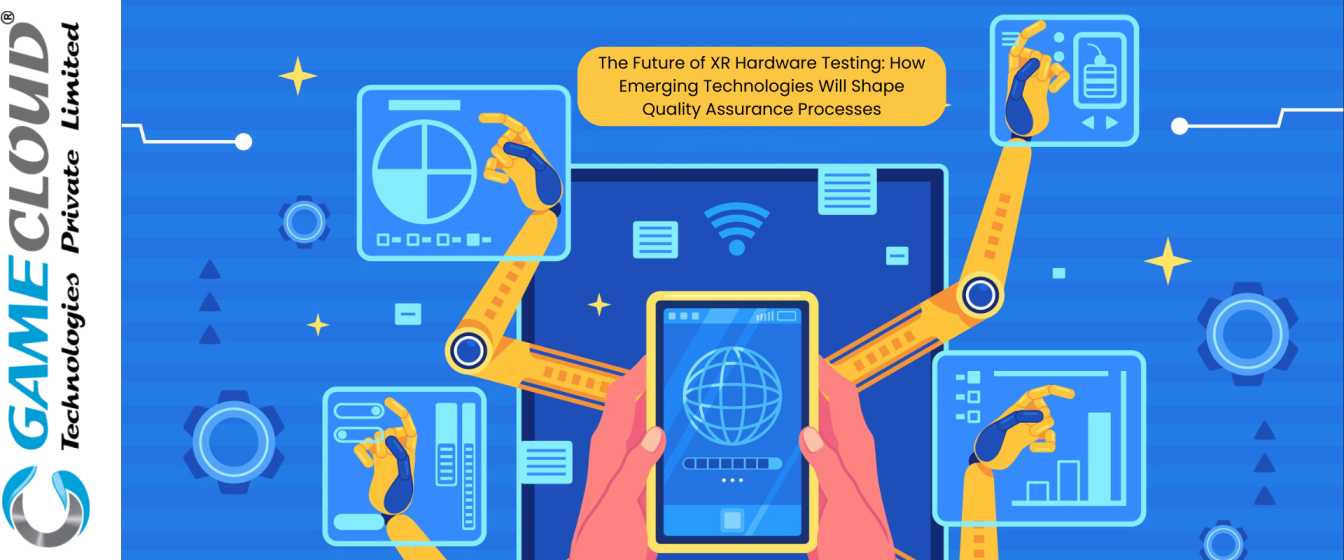
The rise of Extended Reality, encompassing VR, Augmented Reality, and Mixed Reality, has redefined how we interact with technology. As these immersive systems expand into industries such as healthcare, gaming, education, and engineering, the need for robust hardware testing and quality assurance has intensified. Emerging technologies are poised to revolutionize this field, reshaping the tools and methods used to test XR hardware.
XR Hardware Testing: Why It Matters More Than Ever
The growth of XR means devices must now deliver immersive experiences without hiccups. Any lapse in performance—such as lag, tracking errors, or poor visual rendering—can result in discomfort or frustration for users. QA processes, therefore, have to go beyond conventional testing frameworks, adapting to the specific needs of XR environments.
Testing these devices requires analyzing factors like motion tracking accuracy, field of view, and real-time responsiveness, all of which contribute to smooth and intuitive experiences.
AI’s Role in Automating Complex Testing Scenarios
AI has become a game-changer for hardware testing. Its ability to simulate user behavior in various XR scenarios provides unparalleled insights into device performance. AI-powered systems can run extensive simulations, from evaluating how a device handles complex motion patterns to testing voice command accuracy under diverse conditions.
Moreover, predictive analytics powered by AI can forecast potential hardware malfunctions by analyzing real-world usage data. These insights enable manufacturers to address issues before they escalate, making XR devices more reliable over time.
Specialized Tools for Advanced Testing
Traditional hardware testing tools often fall short when assessing the intricate mechanics of XR devices. Specialized equipment is being developed to address this gap. Tools that evaluate hand and eye-tracking precision, latency, and positional accuracy are helping testers identify potential pitfalls early in the production cycle.
For example, testing rigs equipped with motion sensors can gauge how well a VR headset tracks user movements, ensuring minimal latency to reduce motion sickness—a common complaint among VR users.
Enhanced Focus on User Experience
As XR devices become more consumer-focused, prioritizing user experience testing has taken center stage. This process involves more than just functional checks. Testers now assess how natural the interaction feels—whether users can intuitively navigate virtual spaces or comfortably switch between augmented and real environments.
For example, usability studies might involve observing how people interact with virtual objects or evaluating the intuitiveness of gestures for tasks like object manipulation. The findings from these studies can guide developers in refining their designs for better accessibility and enjoyment.
Augmented Reality in QA Practices
Ironically, the same XR technologies being tested are also aiding the testing process itself. Augmented Reality can overlay data during hardware inspections, providing real-time metrics on device performance. For instance, AR glasses worn by QA testers can display visual indicators for motion tracking accuracy or network latency during tests. This integration streamlines QA workflows, enabling testers to gather insights more efficiently.
Challenges That Lie Ahead
While emerging technologies present exciting opportunities for XR hardware testing, challenges persist. The sheer diversity of XR use cases makes it hard to standardize QA protocols. A VR headset used for gaming, for instance, will have vastly different performance expectations compared to one used in surgery.
Additionally, the high costs of developing specialized testing tools and the need for cross-disciplinary expertise—spanning hardware engineering, software development, and human factors research—can slow down innovation.
Shaping the Future of XR Testing
The trajectory of XR hardware testing will continue to evolve alongside advancements in AI, AR, and automation. As devices become more capable and immersive, so too must the methods used to assess their quality. The focus will likely shift toward creating testing environments that mirror real-world conditions, ensuring devices perform optimally across all scenarios.
Beyond technical performance, the next phase of QA may emphasize emotional and cognitive factors, like how XR experiences influence mood or learning outcomes. These nuanced approaches will help developers refine their products to align with user expectations and broader societal needs.
Shaping the Future of Immersive Excellence
At QualityReality, we pride ourselves on redefining standards in XR and Metaverse solutions. Our mission is to deliver seamless, immersive experiences by ensuring the highest quality in app and hardware performance. Backed by GameCloud’s legacy, we bring innovation and expertise to every project. From testing XR functionality to optimizing user engagement and hardware durability, our dedicated team ensures excellence at every step. Partner with QualityReality to create transformative, reliable, and inspiring extended reality experiences. Together, we’re shaping the future of digital realities.
Conclusion
The future of XR hardware testing is being reshaped by groundbreaking technologies. From AI-driven simulations to AR-assisted inspections, emerging tools are enabling more precise and efficient quality assurance processes. While challenges remain, the innovations on the horizon promise to elevate XR experiences, ensuring they are not only functional but also engaging and reliable.
As we move forward, testing will remain a cornerstone of XR development, driving progress and paving the way for a more immersive digital future.
For Know More Contact-Now
FAQs: XR Hardware Testing
Why is XR hardware testing important?
It ensures seamless performance, preventing issues like motion lag and tracking errors that impact user experience.
How does AI improve testing?
AI automates simulations, detects hardware malfunctions, and enhances motion and voice command accuracy.
What are the benefits of using AI agents in game testing?
Motion sensors, eye-tracking tools, and latency testing rigs help assess performance.
How does AR assist in testing?
AR overlays real-time data, helping testers visualize performance metrics instantly.
